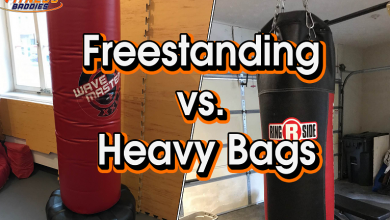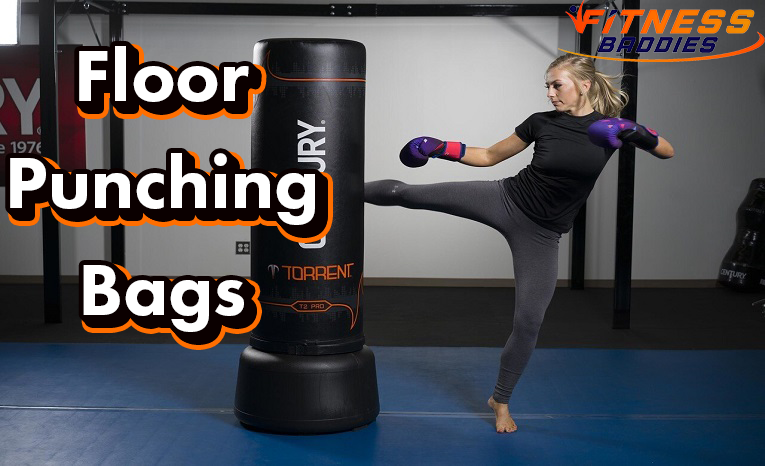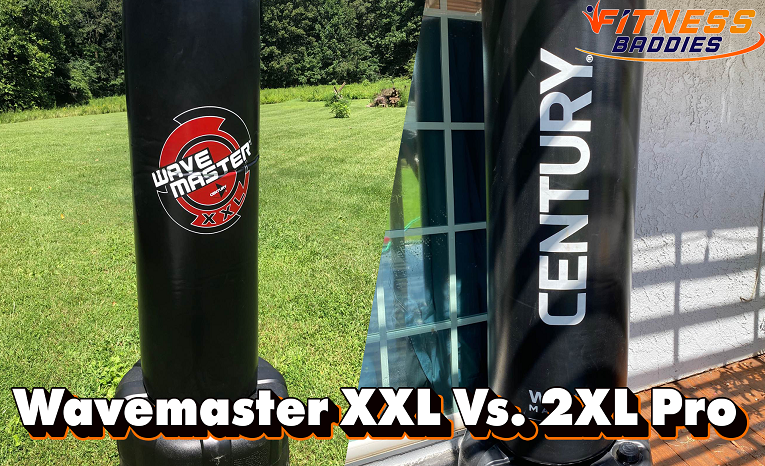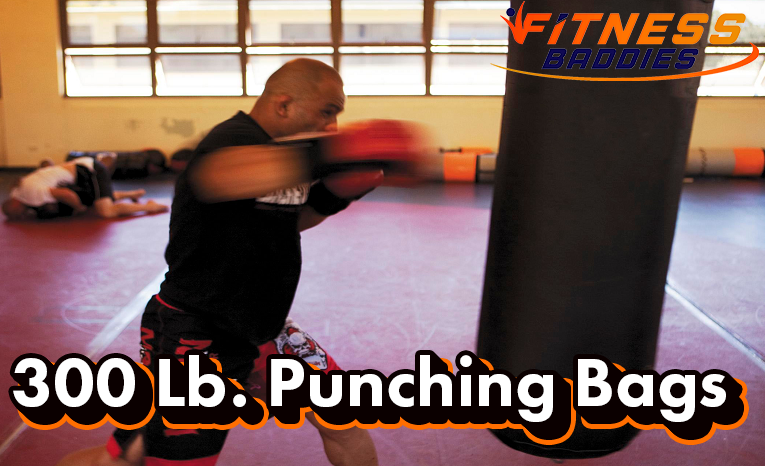Punching Bag Without Gloves
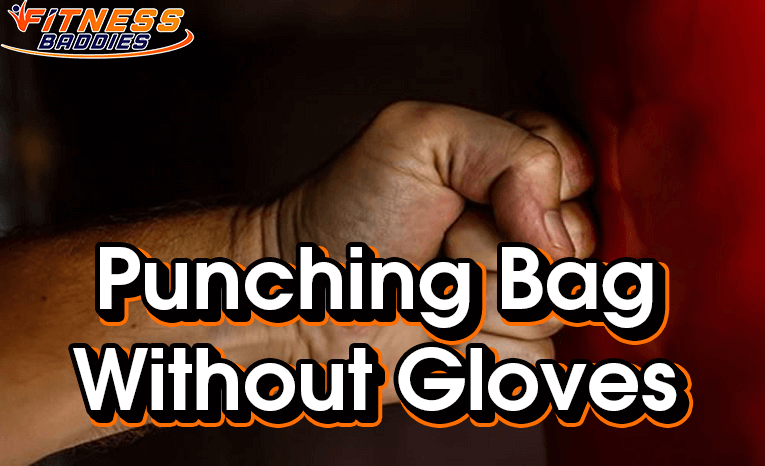
From Muay Thai to MMA fighters, boxers, and even bodybuilders, working out on the punching bag is always a great way to work both upper and lower body muscles.
However, whether you should use a punching bag without gloves is a subject to debate.
Is it a good idea?
I’ll cut right to the chase here; yes, you can punch your bag on bare knuckles, and it’s even considered beneficial if you want to strengthen your knuckles, forearm and wrist muscles.
That’s the bright side, now, onto the catch.
Well, there are some risks involved when hitting a punching bag on bare knuckles. So before tossing your gloves aside and going hard on your punching bag without wearing gloves, stay on this post to the very end to find out if it’s such a wise thing to do. I’ll also, as always, share links to the sources of the information in this post.
If you want to know my personal opinion, it has a lot to do with the type and weight of punching bag that you are using.
My go to bag is the Wavemaster XXL, this one here, and the great thing about this bag (other than it being the legit best bang for buck bag out there) is that it’s not so hard of a bag that you need to worry about not wearing boxing gloves with it.
A lot of us though do still train with the heavy, harder style hanging heavy bags like garage punching bags that are designed more for a professional hard hitter. Even this 100lb bag here is not one that treated my knuckles well when I trained on it full force without proper protection.
These are the bags that can seriously give your knuckles a pounding.
Punching Bag Workout
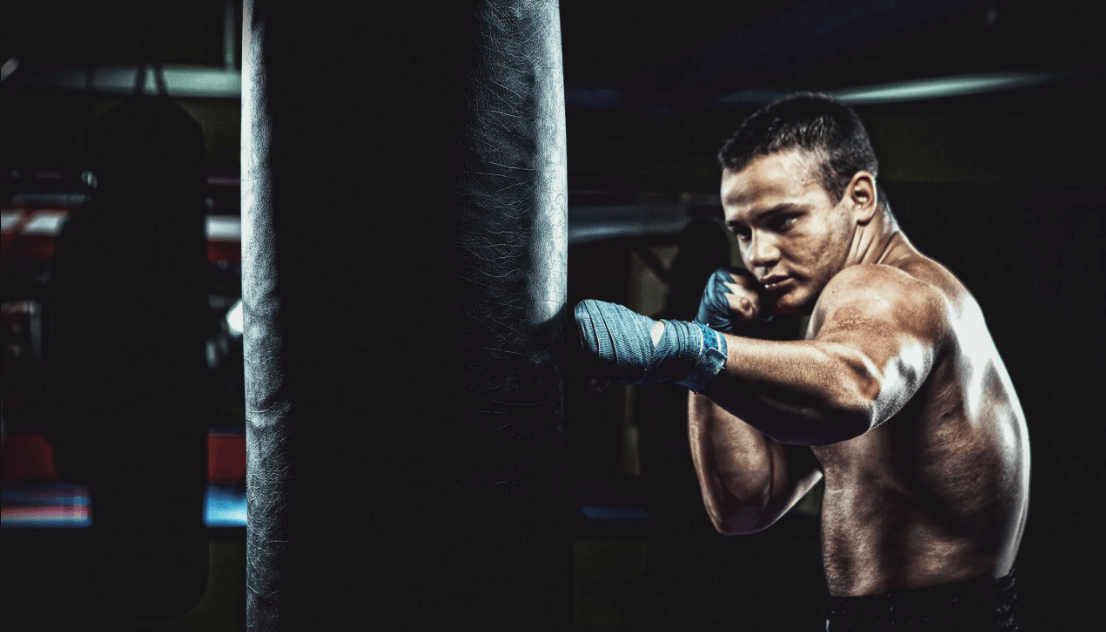
Just like most other workout activities on your list, punching bag exercise has several benefits to offer. It helps work your upper and lower body , perfect your punching skills, build hand muscles, and harden your knuckles.
But to really load up your guns for a seriously powerful and proper punch, you will need to put in some more work on other workouts, both bodyweight and weight training workouts.
Be it calisthenic workouts like planks and push-ups to target both your biceps and triceps at a go, or planche lean for ultimate muscular strength. Resistance training workouts like seated tricep press or the military press are great for building on punching power.
Before jumping into it, however, you should know the right form and stance to assume to make the most out of your workout. To get the stance right, here are a few tips; Start by facing the bag, with your feet shoulder-width apart. Drop your dominant foot back and turn your body slightly — face one o’clock with the knees bent softly for even bodyweight distribution.
Lastly, make sure both your fists are by your face to protect your shin, with elbows at the sides.
Now that you’re in position, next is to practice some of the primary punches.
A Jab
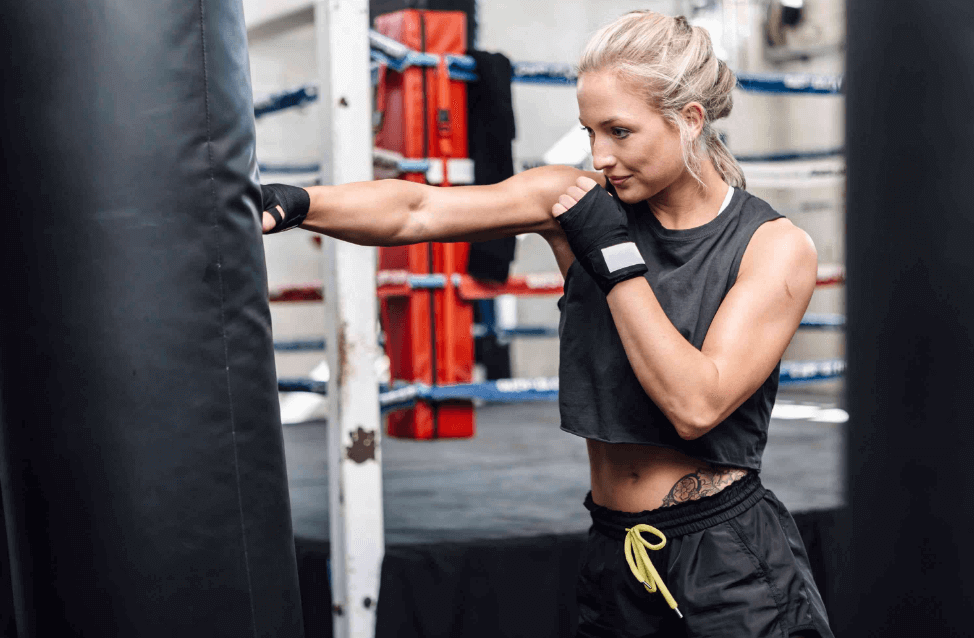
Deliver your jab with the non-dominant hand, rotating it to the center of your body to create more power for the punch. Land it with the knuckles leading, keep it at eye level.
The Cross
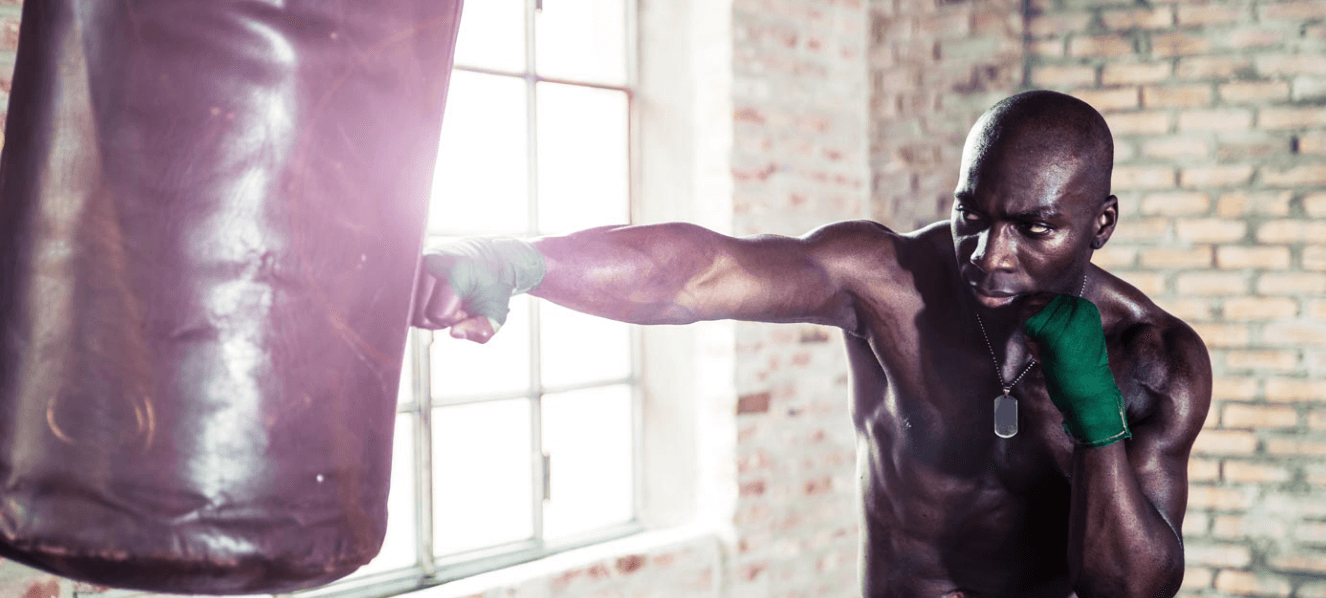
To land the cross punch, you should use the dominant hand, hitting the same spot as your jab did. Start by rotating your fist inwards from your side to strike, then draw it back to your side as you bring the other fist up to cover your face.
The Hook
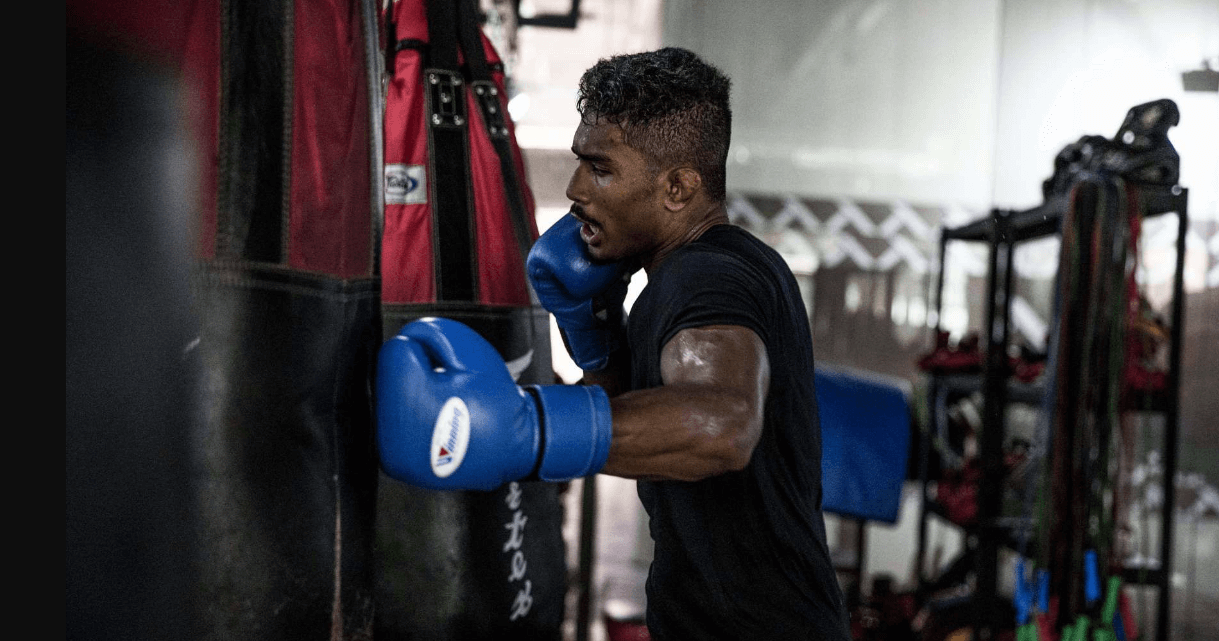
For this punch, start by making a 90-angle degree at your front elbow, with the arm parallel to the ground, and proceed to rotate your waist to hit the punching bag by its side. Now, repeat the same move on the other side to land a “back hook”.
An Uppercut
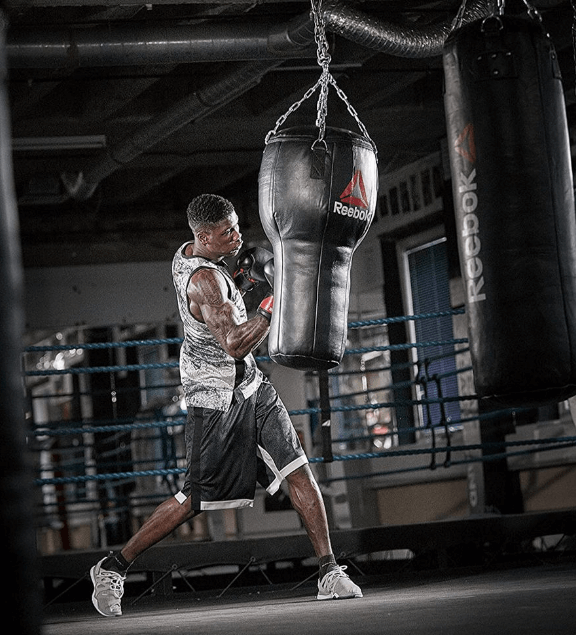
To get a perfect uppercut you should first bend your knees (to create torque from your hips and lower body pushing you off the ground.) Shift your body weight to the front foot, and then drop your front elbow to almost touch the front side of your front hip, then spring your legs upward to deliver the punch.
Repeat it on the opposite side using the other hand and the same process of body movements. Once you learn the sequence, speed up the cycle and go for 20 seconds straight.
Is It Okay to Punch a Punching Bag without Gloves?
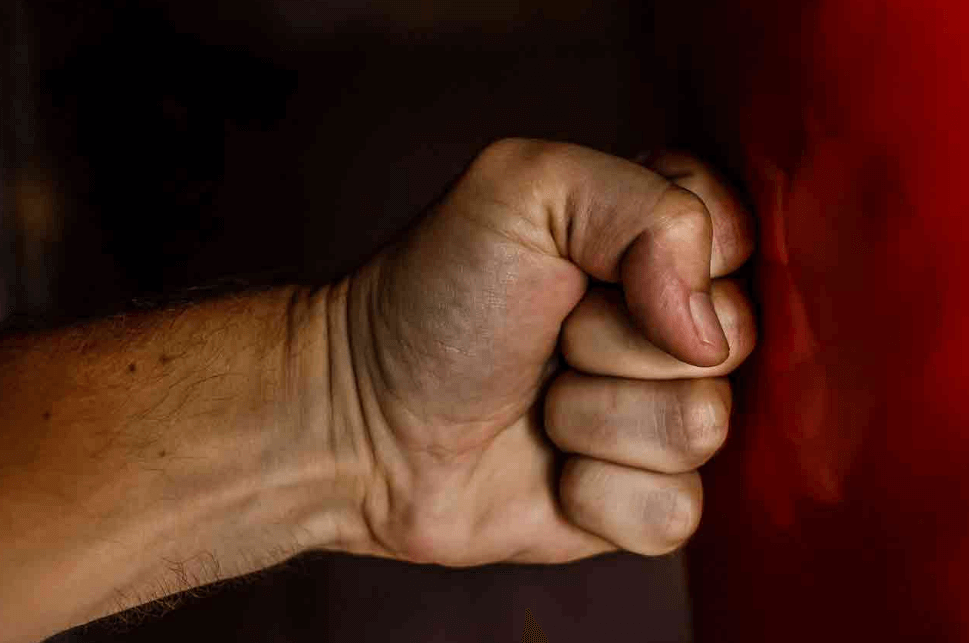
As aforementioned, the simple answer is that punching your bag without gloves is perfectly fine. It’s good for your knuckles, fists, and hand muscles. However, keep in mind that hitting a punching bag with bare fists could cause forearm or wrist injuries if not done right.
If you’ve not achieved the proper technique to throw a perfect punch, I would advise against bare fist punching bag workout to avoid injuring not only your knuckles, but also your wrist, or breaking your skin. If that is your case, you should wear gloves and preferably gloves that are suitable for beginners like amateur boxing gloves. And even for the avid boxers, hitting a heavy bag without gloves isn’t something you should be doing over long sessions or daily.
Proceed with caution, exercising for only about half an hour max, and keep the sessions few and far between, at only several times a month.
How to Punch a Punching Bag without Gloves?
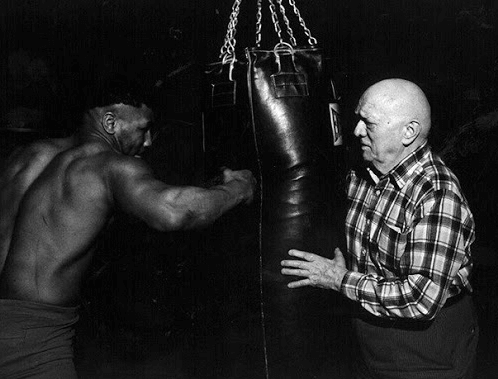
You need to be very careful during bare knuckle training. One wrong move here could leave you with a bruised skin, easily break your knuckles, or a serious hand fatigue that could put you out of commission for several days.
The type of bag is also something to consider, you don’t want to be punching a heavy 300lb punching bag, or a tough homemade tire punching bag with no gloves, that’s for sure. Of course, unless you have measured your fitness level and you’re fit enough to take on such tougher challenges; but more importantly, you know what you’re doing.
One crucial thing to do here is to keep your wrist straight and your fist as flat as possible. Keep your hand closed so that the part of your fingers that makes contact is completely flat. You can throw a light test punch to find out if your punch is right.
The top row of your knuckles and the front section of the fingers should both hit your punching bag simultaneously. Another thing to be keen on is the wrist, keep your wrists straight so that your hand, wrist, as well as the forearm, are in a straight line as you make contact.
Also, you need to tighten your wrist, shoulder, and hand muscles right before your blow lands, then pull your hand back right after landing the punch.
Bare-knuckle Punching Bag
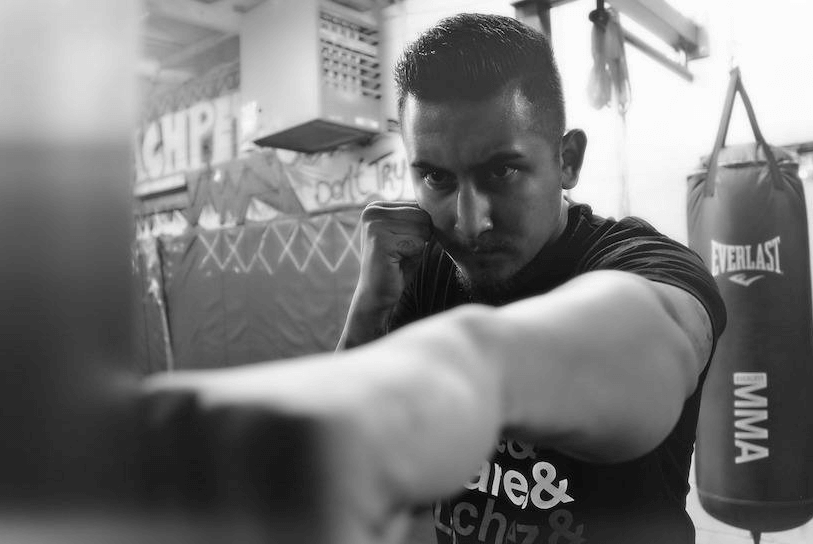
You need to be particularly keen when deciding the ideal heavy bag for bare knuckle boxing training, be it freestanding or hanging punching bag. It’s OK to be choosy here, as it needs to be as easy on your bare hands as it can get.
In this case, a punching or heavy bag made of canvas material, synthetic leather, thick plastic, or rubber, and filled with water, layered foam or clothes is a great choice to avoid scraping on your skin or fracture on your knuckles.
Punching Bag with Only Hand Wraps
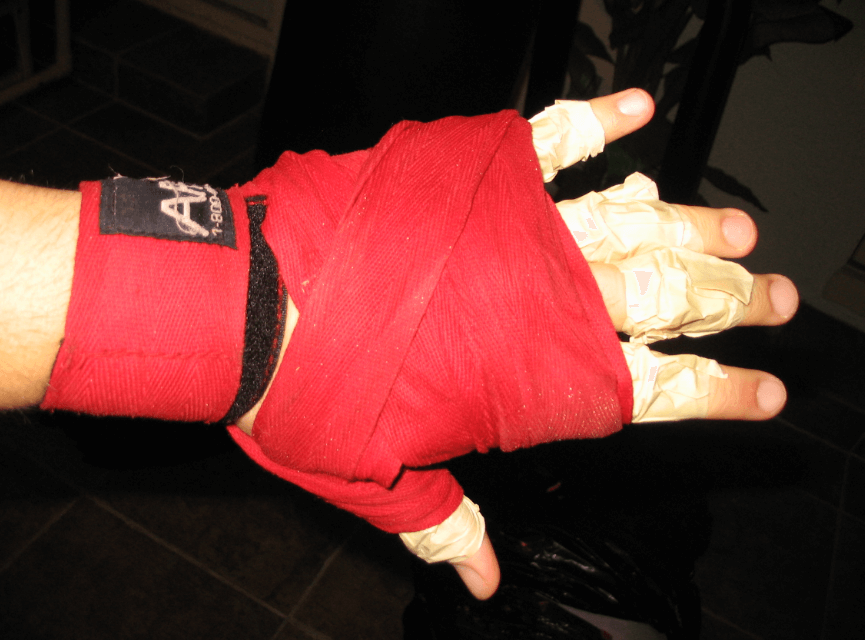
Hand wraps are pretty much the middle ground between bare-knuckled workouts and boxing gloves protection. However, it’s advisable to use both hand wraps and boxing gloves for maximum protection, and if you love dishing out some mean kicks too – get some high top or low top boxing shoes as well.
However, if you want to ramp up your exercise, then you can go at it without gloves. Hand wraps come in handy here, giving you a smooth transition.
The first and most important thing here is to get the right wrap for the job, in which case you should look for one that is at least two inches wide. And the length is just as important, but any wrap from 120 inches (for someone with smaller hands) to 170 inches (for those with bigger hands) should suffice.
What Is the Advantage of Using Boxing Gloves?
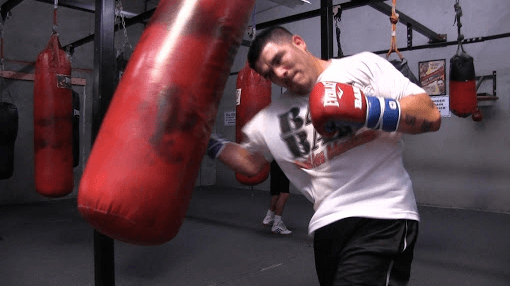
Working out on your heavy bag without gloves is great at strengthening your muscles, bones and connective tissue while hardening your knuckles. This also means your hands move faster, and with the lack of padding, the impact is more crispy, punchy, and condensed.
Granted, when it comes to the actual boxing sport or a street fight, this could make things a little risky for both you and your opponent. Chances are, you are going to tear your opponent’s skin, and potentially bruise your wrists, break or fracture your knuckles or bones upon impact with their skull.
This is where wearing boxing gloves comes in, solving these issues and taking the risk out of professional boxing…and keeping the action less bloody, too. And yes, you’ll need their padded protection when dropping the punches during exercise, especially if you just picked up your first apartment punching bag and your knuckles and bones are still brittle.
Can Boxers Fight without Gloves?
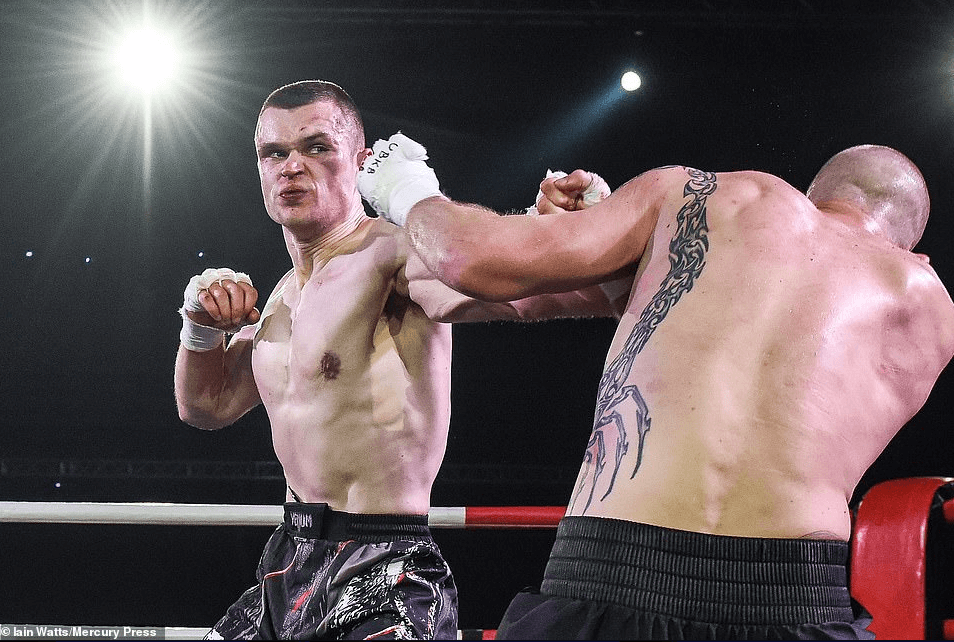
In professional boxing, safety is always a priority, which is the case with most combat sports. So finding boxers dishing out bare-knuckle blows is very unlikely. There are two sides to the issue of using gloves or settling for bare knuckle boxing.
On one hand, it’s ideal for the safety of both opponents since the blows are cushioned, and not as fast as bare-hand punches - reducing the chances for injury on both sides. But there’s also a flip side to the use of gloves.
With the sense of security from the protection of gloves, boxers go hard on each other’s heads, as they don’t have to worry about knuckle fracture or bruised wrists.
So what’s the big deal, they have gloves on anyway?
Well, the problem is, this increases the risk of concussions and brain injuries, in the long run, potentially causing mental illnesses or brain issues among boxers in their latter days.
How Do You Hit a Heavy Bag without Hurting Your Wrist?
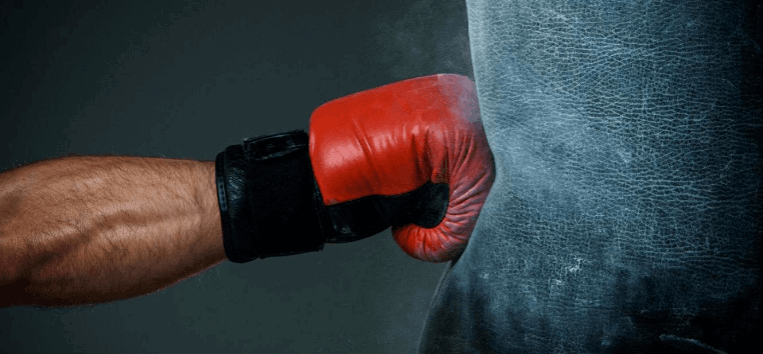
Whether you have gloves on or you want to punch a heavy bag without hand protection, there’s always the chance for injury if you don’t hit it right.
The one main way to ensure your wrist isn’t at risk is to keep your fingers on a level plane and flushed nicely to one another. More importantly, keep your wrist and arm as straight as possible.
Also, only stiffen the wrist when hitting, keeping it tight long before will strain the muscle and tendons. This puts you at risk of fatigue on these parts, hence the wrist could potentially loosen when striking, and spell disaster.
Should I Fill the Punching Bag with Sand or Water?

Any works. The choice here boils down to the advantages you expect with either of them. To help you choose better, here’s a rundown of the benefits that you get with each.
Water
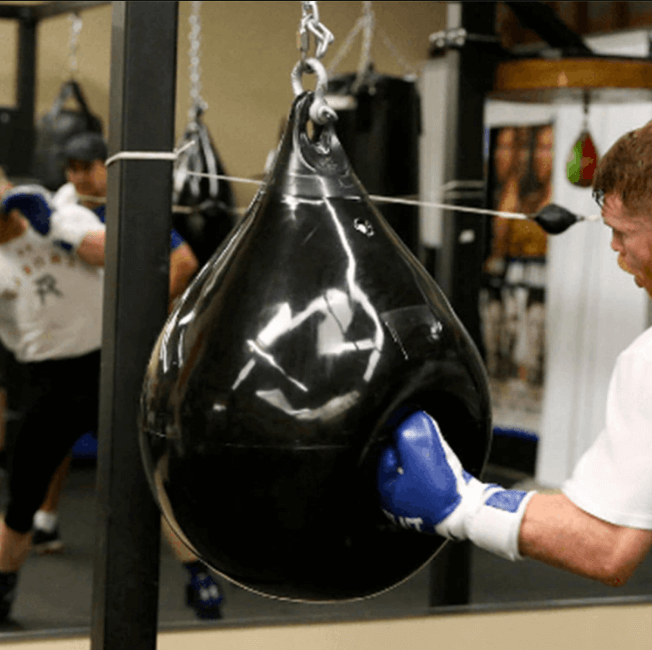
Water is ideal since it’s readily available and free. you don’t need any special water for this.
Filling and emptying the bag is a no-brainer, and draining it just as easy, so you can change the water for every other session. This also makes aqua bags some of the most portable punching bags you can get.
On the downside, however, water isn’t as heavy as sand is, so you might find yourself knocking your standing punching bag over with each hit. This , for example, is one of the downsides of using a lighter aqua bag over a heavy bag, although on the flip side, the former is comfier and easier on bare knucles, and further, better suited for those looking for a portble punching bag.
Besides, you need to replace it often to avoid algae, mold, or mildew growing on your punching bag.
Sand
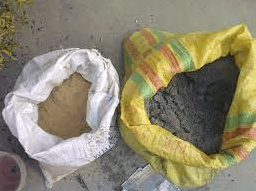
Sand is a great choice for a stable floor punching bag that can withstand quite a serious beating, those heavy duty ones like the Wavemaster XXL or the 2XL Pro. Since sand is 45-percent denser than water, it makes for a stubborn punching bag that will take on most of your nastiest blows.
It should also be easy to find, and even if you had to buy, you’ll only need to part with a few bucks for a 50-pound bag.
The problem with sand is that filling it into your bag can prove to be quite a task, as you might have a bit of shaking and pushing around to do.
And emptying it is going to be a challenge too, and with lots of vacuum cleaning to do after.
You might have to throw in a few dollars if there are no any creeks nearby to find it.
Should You Wrap Your Hands when Hitting the Heavy Bag?
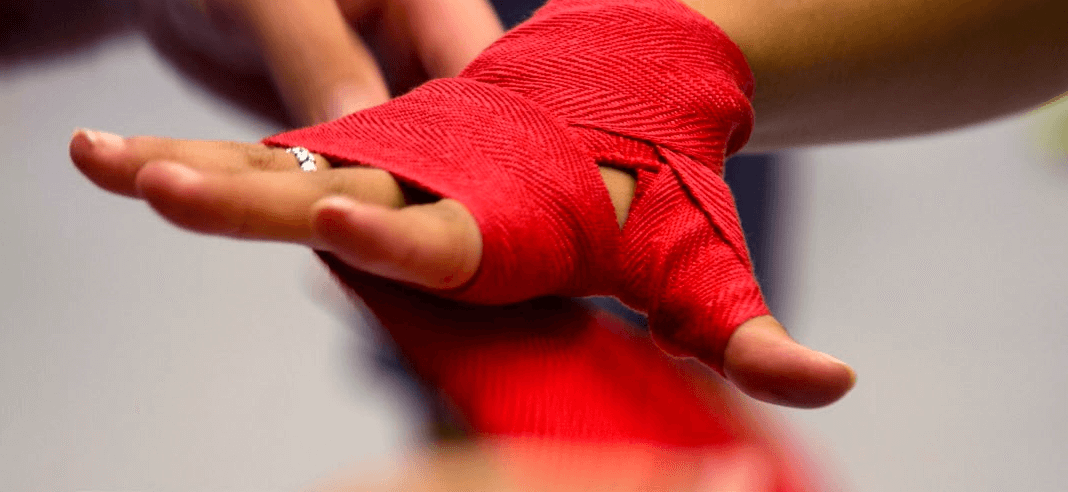
You don’t necessarily have to wrap your hands every time you hit the heavy bag, but in several instances, it’s important to add that layer of protection. If you’re a starter and want to give it a go at your heavy bag without gloves, hand wraps give you slight protection that will help your knuckles harden.
You also need to protect the numerous bones on your hand from the force resulting in the wake of every punch. The hand has up to 27 small bones, and all of them are in the way of a significant shock every time you hit.
If applied right and tight enough, wraps hold all these bones, tendons, muscles, and everything else in place. This offers solid support to prevent bone fracture and of course, protects the skin as well.
Best Hand Wraps
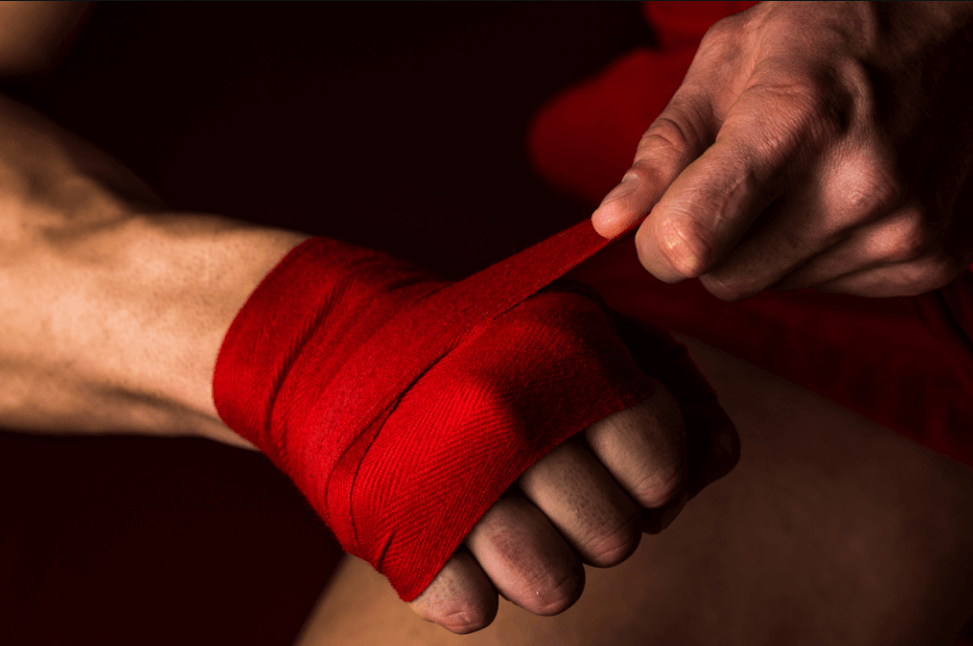
If you would rather get yourself hand wraps than chance plunging your bare hands full throttle onto a heavy bag, here are great yet cheap hand wraps for reliable hand protection.
Best Hand Wrap for Boxing
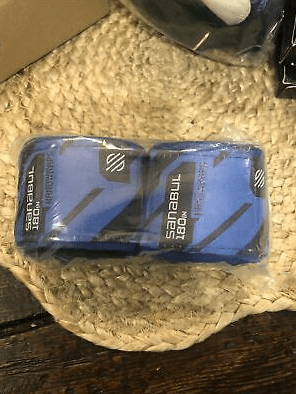
Are you a diehard wannabe or a seasoned boxer? Then you should check out these Sanabul Elastic Professional hand wraps. Costing only $6.73, these wraps pack in an array of great features as the 180-inch length for max protection.
A semi-elastic construction also makes them very durable with a firm grip so you won’t have to worry about them coming loose in the heat of the moment.
A breathable and fast-drying design also makes these hand wraps the go-to choice if comfort and convenience are of the essence for you.
Best Hand Wrap for Muay Thai
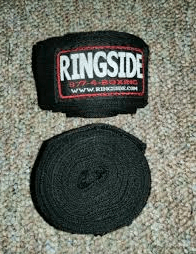
If you want to practice Muay Thai or other martial arts for big guys, then this Ringside Mexican Style Boxing Hand Wraps will suit you perfectly. At 180 inches, the pair is long enough to offer you sufficient protection. And the cotton it’s made of is slightly elastic for comfort and firmness.
They are also machine-washable with a wash bag, making cleanup after use easy. And then a hook and loop closure keeps your wraps in place and makes taking them off a breeze.
Best Hand Wrap for MMA
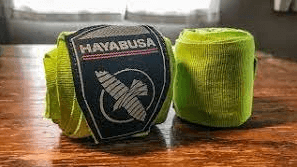
For the MMA men and women out there, this Hayabusa Boxing Hand Wraps got you covered, with a hook and loop closure system for easy, convenient use.
At 180 inches and 2 inches wide, you get that additional padding to your mma gloves, I prefer using them with my rdx gloves for ultimate hand protection when throwing mean hammer fists during heavy bag work.
Then latex-free cotton elastane offers just the elasticity you need to keep you comfy while the wrap stays in place. You’ll also love the fact that these wraps are washer and dryer safe, just make sure to use a mesh bag and wash them with clothes of similar colors.
Conclusion
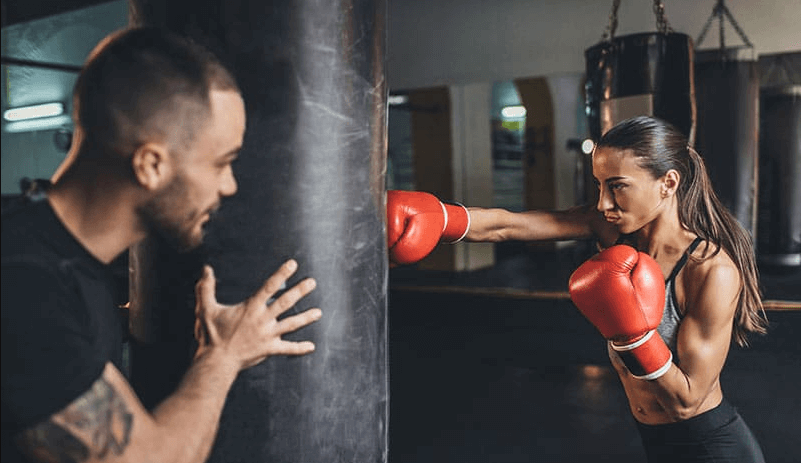
Now that you know what to expect with your bare knuckle heavy bag exercise, it’s time to take charge of your workout and take your heavy bag training to the next level. Make sure to maintain safety and take it slow, even the least of work out sessions add up over time to great results.
Related Readings:
- Floor Punching Bag: How Do They Differ From Other Bags? Which Are The Best Ones?
- Outdoor Heavy Bag Stand: Which Are the Best Ones?
- Portable Punching Bag: Which Ones Offer Most Portability? Best Portable Punching Bags
- Best Martial Arts For Big & Tall Guys
- Apartment Punching Bag
- Best Freestanding Heavy Bags of 2022 - My Personal Top Picks Reviewed
References:
- https://themmaguru.com/punching-heavy-bag-without-gloves/
- https://www.livestrong.com/article/512136-do-you-have-to-wrap-your-wrists-to-hit-a-punching-bag/
- https://www.livestrong.com/article/506013-how-to-punch-a-bag-bare-knuckled/
- https://fightquality.com/2020/09/25/what-protection-do-boxing-gloves-provide/
- https://www.mmarevolution.com/wavemaster-punching-bag-sand-or-water/
- https://www.wellandgood.com/punching-bag-workout/
